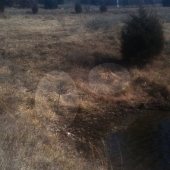The bare ground from earthwork gives you an opportunity to modify flora. With the mix of calcium rich parent material and humid well drained, what is your soil pH like?! What kind of mineral deficiencies do you tend towards?
I bet the kinds of plants you'd want to break up and mine the chalk are in the native flora... Have you ever poked around in
the ecological flora of the british isles. You have a couple hundred years of vegetation ecology headstart.
I think Hollingsworth is pointing you in the right direction with wood as a way of storing nutrients and moisture.
I would also consider a rapidly growing, chalk tolerant, nitrogen fixer a critical component to go with the wood.







